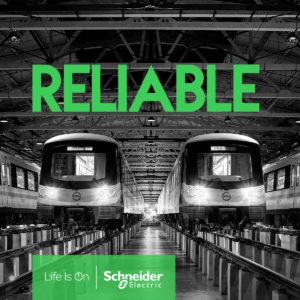If you’re running an industrial process of any kind, you can’t afford any downtime. Every minute a production line is down is costing you money, and that’s eating into your profit margins. To keep things running, you need to make sure every piece of equipment is operating smoothly. And to keep capital and maintenance costs down, you need to get the longest life out of every component.
Some of the hidden culprits to process reliability in an industrial environment are current and voltage harmonics in the electrical supply. Harmonics are unwanted currents caused by a variety of non-linear type loads like welding machines, arc or inductions furnaces, battery chargers, uninterruptible power supplies, and variable speed drives (VFDs).
Because these kinds of loads draw current in an uneven way, they generate current harmonics which, in turn, can cause voltage distortion to be propagated through the electrical network. This can cause efficiency losses in the form of poor power factor. Harmonics can also overload wiring and transformers, creating excessive heat and, in extreme cases, fire.
For this reason, power components are often oversized. For example, the incoming transformer may have to be a higher rating, for which your local utility will charge higher fees.
But harmonics can also impact other equipment. They can cause protection devices to false trip and cause a plant shutdown. If a power factor correction system is being used, harmonics can cause increased currents inside the capacitor bank. This can produce unwanted resonance that, in turn, causes voltage peaks and drops in a plant’s electrical network.
Harmonics can also shorten the life expectancy of equipment. In fact, Schneider Electric estimates that premature equipment replacement because of high harmonic conditions can add up to 15% in CAPEX and 10% in OPEX costs.
Such reliability issues and costs can be avoided if the proper harmonic mitigation solution is implemented. Let’s have a look at five solutions. Choosing the best one will depend on the nature of the load and the power demand of connected equipment.
- Smoothing the flow: reactors and chokes. AC line reactors and DC link chokes help reduce the level of harmonics on the electrical system by effectively expanding out and reducing the peaks caused by a VFD’s inverter. Typically used for applications up to 500 kW of unit power or 1000 kW of total drives power, these devices have the added benefit of increasing the lifetime of each VFD. They are also the most reasonably priced and compact solution, but less effective at mitigating the harmonic distortions in total.
- Cancel out the problem: 12-pulse drives. For larger drives above 400 kW, the 12-pulse arrangement is a good option to consider. This solution uses a 30-degree phase shift transformer, with the standard output supplying one set of VFDs while the 30-degree output feeds a second set of VFDs. A 6-pulse converter bridge connected to each of the outputs enables cancellation of harmonics. If even greater mitigation is required, 18- and 24-pulse configurations are possible. Multi-pulse solutions are most efficient in terms of least power losses, but they are not simple and require the additional expense of a transformer.
- The low-cost option: passive filters. Combining reactors (inductors) and capacitors, a passive filter creates a resonant circuit, tuned to the frequency of the harmonic order you need to eliminate. Multiple filters can be combined to tackle multiple harmonics. They are a good, low cost option. However, they have a low power factor at partial loads and therefore risk causing resonances within the grid.
- Measure and counteract: active filters. By measuring the harmonics produced by VFDs in real time, active filters then generate an equivalent harmonic spectrum, but in reverse phase. When added to the VFD current, the two harmonic series cancel out. Active filters are installed in parallel to VFDs, and can be a good moderately priced solution because a single filter can be used to provide mitigation for several drives that have one point of coupling. But keep in mind that these filters must also be oversized to compensate for decreased power factor.
- Swap out the source: low harmonic drive. VFDs designed with an ‘IGBT’ converter on the mains side instead of the typical diode rectifier consuming sinusoidal current without harmonic currents from the mains. These are called low harmonic drives, and the result is completely avoiding the impact of harmonics and idle power on the electrical system. They are in the midrange in terms of cost and are simpler than an active filter, but they require more overall space in case of lower power rating compared with active filter compensating a group of drives.
As you can see, each of these harmonic mitigation solutions has advantages and disadvantages. When choosing, you need to consider the application and factors of compactness, simplicity, harmonic mitigation effectiveness, energy efficiency, and overall value for the money.
For example, the reactor/choke solution is the best option when needing to filter only the heaviest distortions, but where overall harmonic mitigation is not the priority. Active filters are especially cost effective for mitigating harmonics for several drives in parallel, while the 12-pulse solution is the most efficient but also the most complex. For applications where harmonic mitigation is the priority, the low harmonic drive offers the best solution.
To learn more about harmonic mitigation options, refer to the Schneider Electric white paper ‘Operational Cost Avoidance through Harmonic Mitigation in Industrial Environments’.



